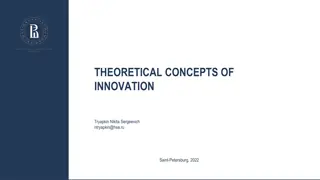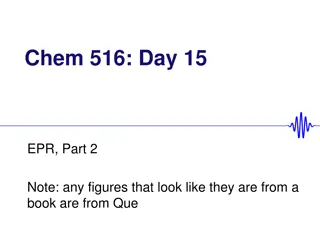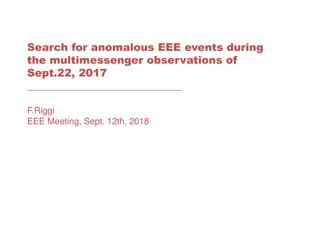Understanding Light Diffusion in Birefringent Polycrystals and IceCube Anisotropy
Explore the fascinating phenomena of light diffusion in birefringent polycrystals and the ice anisotropy effect observed in IceCube. Learn about the optical models, birefringence in ice, and the direction-dependent scattering and absorption properties affecting the behavior of light in these materials.
Download Presentation

Please find below an Image/Link to download the presentation.
The content on the website is provided AS IS for your information and personal use only. It may not be sold, licensed, or shared on other websites without obtaining consent from the author. Download presentation by click this link. If you encounter any issues during the download, it is possible that the publisher has removed the file from their server.
E N D
Presentation Transcript
Light diffusion in birefringent polycrystals and the IceCube ice anisotropy Martin Rongen, RWTH Aachen Dmitry Chirkin, UW Madison
Glacial ice flow, ice layer tilt at the South Pole N Ice Layer tilt direction 225o SW E Ice flow direction 40o NW Ice moves about 10 m/year at South Pole along the 40 west longitude line ~8% less scattering 41o NW Layers of ice of similar optical properties slowly change depth along gradient direction
The ice anisotropy effect Observed integral charge and light curve depend on orientation of receiver DOM with respect to emitter DOM Most charge seen along the flow axis, least orthogonal to it First observed in 2013 and described by direction dependent scattering function, re-evaluation started in 2017 with depth dependent strength fit
Models of optical ice anisotropy in IceCube 1. Scattering (mainly): direction dependent scattering function (ICRC 2013) 2. Absorption (mainly): direction dependent absorption (studied in 2017) Introduced depth-dependence (2017) Discrepancies between data and simulation remain Cannot simultaneously fit total charge and arrival time distribution to statistical precision Absorption driven Ice has small amount of intrinsic absorption, but most of absorption and all of scattering has been assumed to be due to impurities (according to Mie scattering theory). Scattering driven Here we explore scattering of light in pure ice, due to a small difference in refractive index of ordinary and extraordinary waves in ice (birefringence).
Birefringence Ice is a birefringent material: Light is split into an ordinary and an extraordinary rays with respect to the (optical) c-axis, these have orthogonal polarizations The refractive index of the extraordinary ray is direction dependent The extraordinary ray exhibits dispersion between the wave vector and the Poynting vector Physics of Ice, Victor F. Petrenko
Birefringence At each grain boundary every ray is split into two reflected and two refracted rays one ordinary and one extraordinary ray each Wave vector component parallel to surface is conserved, norm is proportional to the refractive index Poynting vectors are derived from wave vectors and boundary conditions Outgoing ray is randomly sampled from Poynting vectors according to Poynting theorem (Poynting vector component through the plane is conserved)
Polycrystalline ice A solid block of ice contains monocrystals (grains) Grains grow independently and the surfaces where they meet form grain boundaries (Black regions = gases) As the surface of an ice core sample sublimates the grain boundaries leave grooves on the surface that can be imaged Ice grain sizes range from sub-mm2 to thousands of mm2 with aspect ratios between 1 and 1.8 elongated Due to it s hexagonal crystal lattice, each grain deforms essentially only by sliding of its basal planes An ensemble of grains under stress (flow) will elongate with the flow yielding a girdle of c-axes orthogonal to the flow
Simulation setup ice flow Boundary surface chosen randomly from parameterized elongated crystal distribution The optical axis of media is chosen randomly from the girdle (or other) fabric distribution If the photon is reflected the current medium axis is unchanged Outgoing photon is chosen at random weighting choices with normal component of Poynting vectors
Birefringence Monte Carlo Running MC simulation on many photons in ice with girdle fabric shows two effects: Diffusion is largest on flow axis and smallest orthogonal to it Photons on average get deflected towards the flow axis photons effectively fly a curve towards the flow axis
Summary and outlook IceCube observes an anisotropic propagation effect aligned with the ice flow Modeling through absorption or scattering on impurities appears to be insufficient The current mismatch is a major source of uncertainties in the description of IceCube ice Diffusion in birefringent polycrystals with preferential c-axis distribution yields average photon deflection and effective scattering that is intrinsic to ice Simulation tool at crystal level and some preliminary parametrizations have been developed Fitting of the effect with this new hypothesis is ongoing























